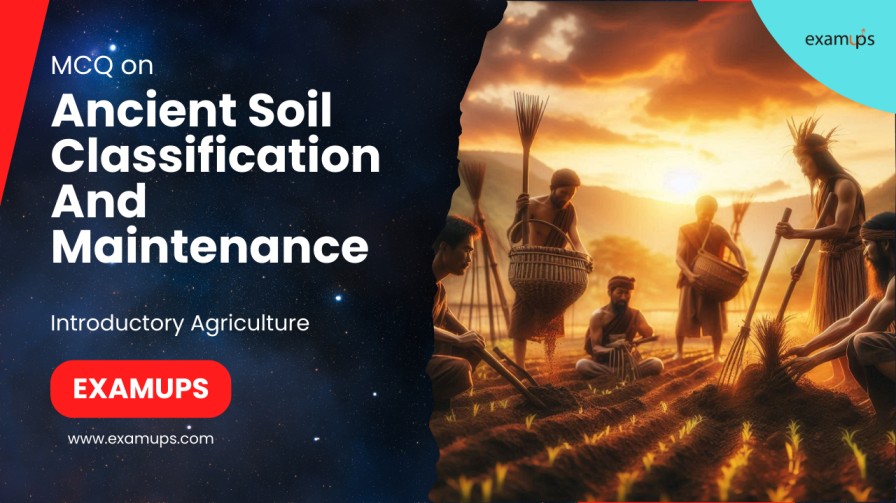MCQ On Ancient Soil Classification And MaintenanceMCQ On Ancient Soil Classification And Maintenance
Ancient Soil Classification And Maintenance MCQ for ICAR-JEF, ICAR-SRF, ICAR-NET, IBPS-AFO/SO, Pre-PG, BHU Pre-PG, IFFCO-AGT, CCI, FCI, B.sc, M.sc, All Agriculture Competitive Exams. 1. What are the three primary geographical







